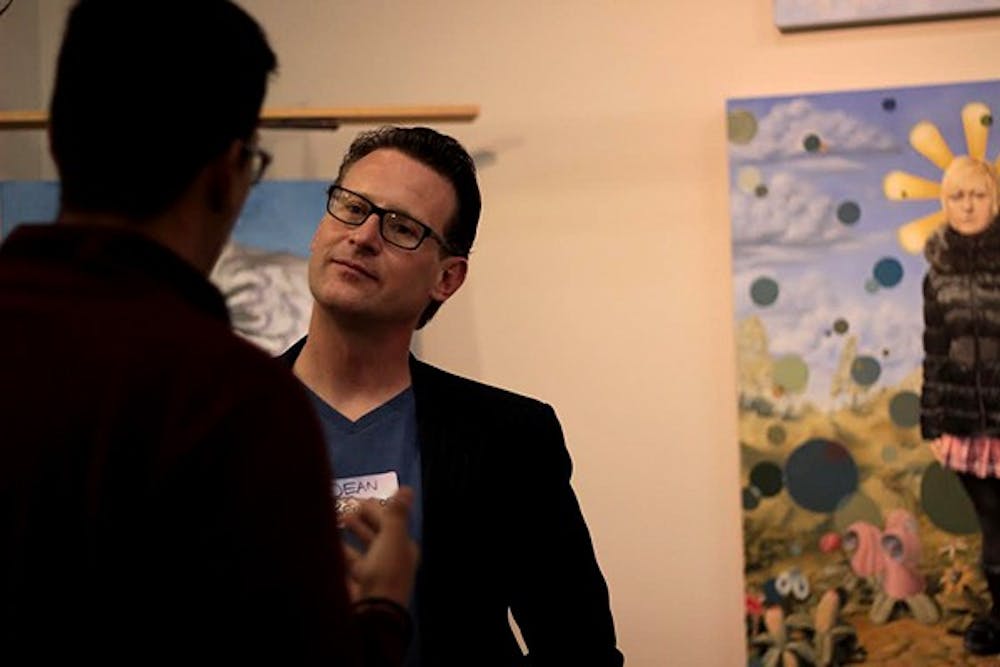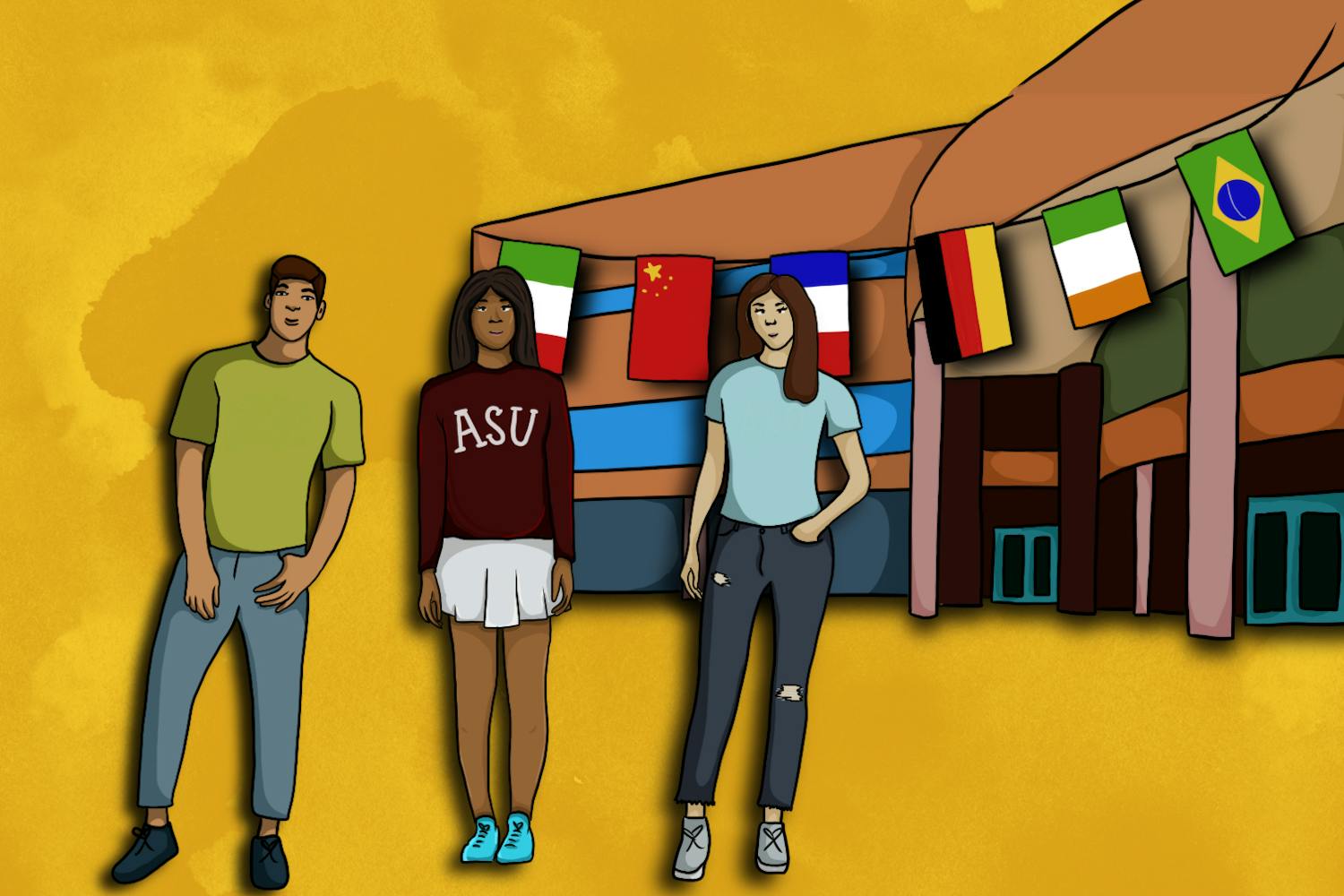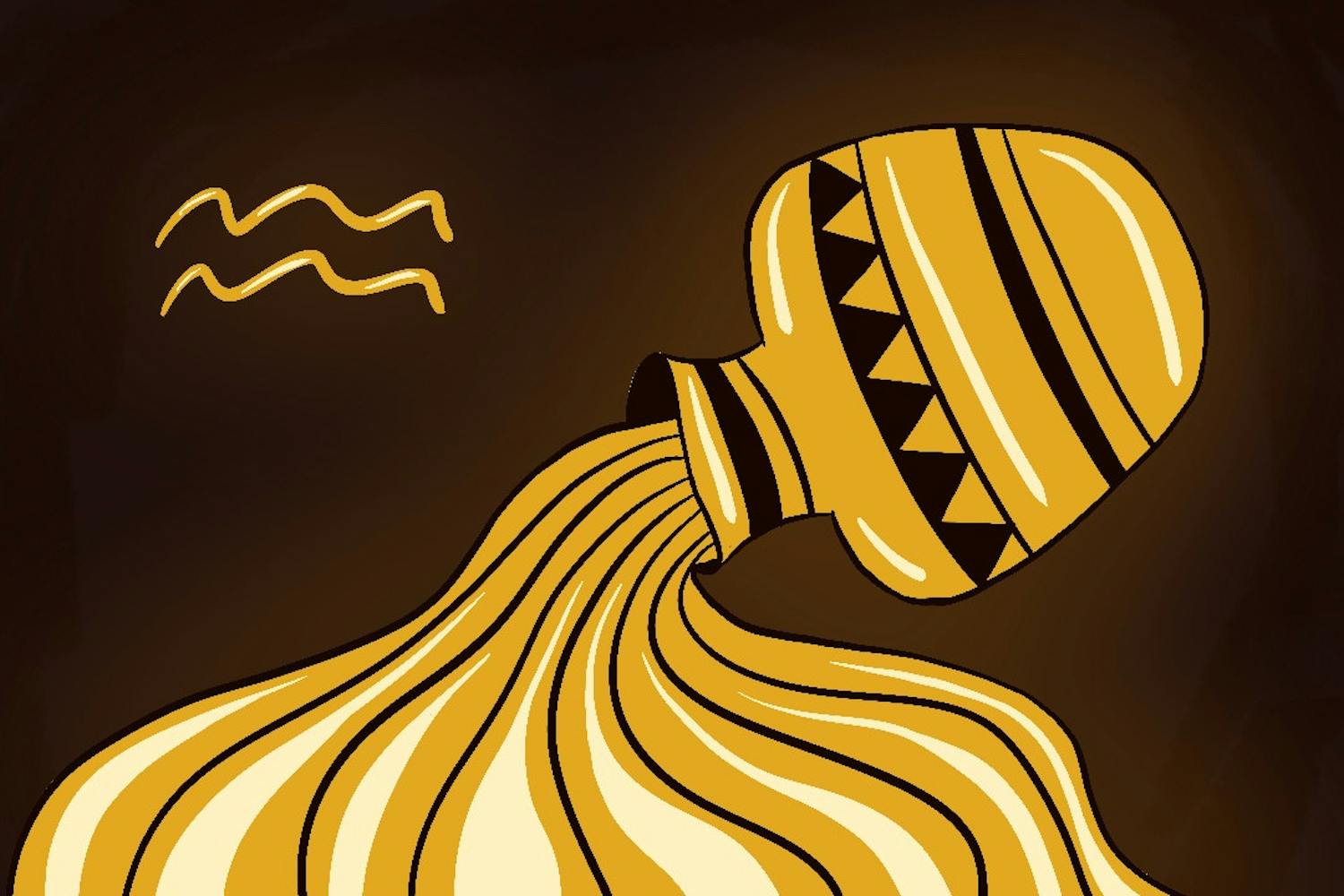For art students like Bassim Al-Shaker, an Iraqi artist who came to Phoenix as part of ASU Art Museum’s International Artist Residency Program, a new project combining the efforts of ASU and the City of Phoenix will give him an opportunity to create, collaborate and exhibit his work all in one space.
Grant Street Studios, a renovated building located in downtown Phoenix’s warehouse district, had its grand opening Jan. 17 to welcome ASU art school graduate students’ talents to the space, which now houses drawing and painting majors.
Al-Shaker’s studio space, one of many in the newly renovated building, is about 10-by-12 feet, and one wall is lined with two paintings, one of a child and the other, a boat among the reeds, propped against the wall.
The third painting, a close-up portrait of a woman, is sitting atop an easel. In the corner, a New York Times article depicting Al-Shaker’s journey to Arizona — from making his living as a barber in Iraq, to running for his life to avoid torture from a group of Iraqi militia loyalists because of the art he created — is printed out and laying on a stool.
Since moving from Baghdad to the U.S. in July 2013, Al-Shaker, whose work will be in exhibits in England and Australia in the near future, has been shown in Phoenix and New York. With his new space in the School of Art’s Grant Street Studio, he will now be able to work with professional artists and curators on a more involved and intimate level.
Located at 605 E. Grant Street, Grant Street Studios is comfortably nestled between Bentley Projects, arguably one of the area’s finest galleries, and the Phoenix art community downtown.
Its location, not far from Valley-recognized events like First Friday and Third Friday, is what third year graduate student Elysia Holland Michaelsen, hopes will give everyone more opportunity to grow.
“It’s a great transition for us, to get our names out there individually and our work out there, and create a dialogue with people who are already working professionally or are mid or late career artists,” Michaelsen said. “That’s great to start a dialogue with them and move beyond just being in this little ASU community.”
It seems the small ASU community of art students was limiting to students like Dan Lam, another third year painting graduate student whose work with polyurethane foam borders the line between paint and sculpture.
“The sculptures have been hard for me, because I’m not used to that, so it would have been nice to have some sculpture majors, so I could be like, ‘Hey, so am I doing this right?’,” Lam said.
The foam she uses is the same that is used in sealing boats, so all of her artwork floats.
“So, if there was a flood in Arizona, it could even save some lives,” Lam said jokingly.
The opening event brought out Phoenix Mayor Greg Stanton, a slew of School of Art and Herberger Institute for Design and the Arts faculty and art community members.
In a speech exploring the marriage between the city of Phoenix and ASU, Stanton addressed the packed room, saying that the closer the University and city can be, the better.
“And everyone in this room knows … that for our city to invent in this incredibly competitive international economy, we’ve got to do business a little bit differently,” Stanton said. “The success here will directly result in increased economic development, the right kind of jobs, a higher educated workforce, and will enable us to retain our best and brightest.”
Acquired by architect and building owner Michael Levine in 2004, Levine, who has taken it upon himself to renovate old, dilapidated buildings in Phoenix’s warehouse district, somehow managed to finish phase one of the Grant Street Studios project by its opening reception — a feat considering construction began in late October of 2013. Levine’s renovations on the Grant Street studio are what earned him a Governor’s Heritage Preservation Award in 2007.
Adriene Jenik, director of the School of Art, said the process of acquiring the building began with the ASU’s office of the university architect and the office of planning, which then coordinated with the city to help figure out what everyone wanted out of the deal.
For Jenik, there were a few priorities in mind when it came to building her student’s space.
“One of the main things is that you just have raw space, because that’s what students need to make their work,” Jenik said. "Then the gallery was really important too, to preserve some of the grandeur of the space, and also so that it would be really a kind of high-quality gallery."
Along with phase one’s studio construction for drawing and painting students, as well as the relocation of ASU’s Step Gallery, a new critique space and Jenik’s studio were also built. Phase two will be completed by May 15 and will house the remaining sculpture, fibers and intermedia majors.
For students like Michaelsen and Lam, who are in their last semester at ASU, the project’s ribbon cutting is a bittersweet event.
“I’m really excited for the first years and all those that will be coming into the program,” Michaelsen said. “Unfortunately, I’m going to be just leaving as probably all these wonderful things are going to happen.”
She continued on, saying that once the other majors are included in the space, there will be so much more dialogue, collaboration and potential that everyone will be able to benefit tremendously from. Michaelsen’s thesis show, which ironically explores the cycle of construction and deconstruction, will be exhibited in the Harry Wood Gallery on Tempe campus in March.
For Lam, who will be published in New American Paintings MFA Edition for 2014, the art school’s acceptance of her exploration into two different mediums was a great experience, but interacting with others would have helped her process.
“Every time you look at work you could be inspired, so, to work around other people who do different stuff … if you see someone doing something big and taking chances, you know, you’re going to be like, ‘Oh, like, I can do that’,” Lam said.
Lam said that no matter where the wind takes her after her program has ended, her two priorities are to live in a place where the arts community is vibrant, and there are great outdoor opportunities for her to draw inspiration from. She recently found a residency program in Zion National Park that she said looked promising.
The warehouse district becoming a hub for art is definitely a thought for the future, but Jenik said that she can see it, even if no one else can.
“This is really the beginning of what I think is a year round, for the next five years, interchange with the community, and we don’t have this kind of level of interchange normally, so that’s exciting,” Jenik said.
Reach the assistant A&E; editor at kgumpert@asu.edu or follow her on Twitter @cat2bekittenmee




